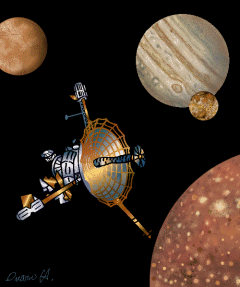When a spaceship fails, the first thing to do is learn lessons. Understand what happened in order to ensure that this failure will not change. It is equally necessary to learn lessons from successes as well.
When a spaceship fails, the first thing to do is to learn lessons. To understand what happened in order to ensure that this failure will not change. It is equally necessary to learn lessons from successes. If a spaceship performs in an exceptional way far beyond what was expected, it is necessary to check what are the reasons for that unusual success. The reasons for that success can be used by engineers and researchers in the future.
The success stories that have existed so far in space exploration can be divided into two types. One type is that of receiving more information than was planned. Examples of this are the NEAR spacecraft which entered orbit around the asteroid Eros and instead of transmitting 16,000 photographs to Israel as planned, transmitted 160,000 photographs. The Mars Global Surveyor spacecraft, which was designed for the activity of one Mars year, functions for 3 more Mars years and in light of its continued success, 5 more Mars years are planned for it. It is clear that the added value of these successes is very great, both scientifically and economically. From a scientific point of view, each photograph and each of its measurements enriches the knowledge about the planet being studied, and from an economic point of view, the financial investment is getting smaller since there is no need to launch an identical spacecraft, unless a more advanced spacecraft is planned in terms of The scientific equipment and in terms of its purpose.
Another type of success is another use made of the spacecraft or its systems. This has an impressive history. The first case is that of the Serviar lunar lander that landed on its surface on 9.11.1967 and a few days later on 17.11 the braking engines lifted the lander to a height of 3 meters and moved it to a distance of one meter. The Galileo spaceship, when it became clear that its high gain antenna was stuck, it was decided to use the low gain antenna whose transmission rate is tens of meters lower and which is intended for use at short distances from the Earth. Changes made to the computer software made it possible to transmit 14,000 photographs, including extending the duration of the spacecraft's activity for several more years. Since the NEAR spacecraft had finished its work program, it was decided to land it on the surface of the asteroid, despite the fact that its fuel supply was close to zero and that it was not planned to make any landing. It was not equipped with landing gear. A clever use of engines allowed it to be lowered to the ground "and lie down". Two sun collectors and one of its corners were used as landing pads. What helped a lot in this successful landing was the fact that the fuel tanks were almost empty so that the small total mass and the almost zero gravity of the asteroid together allowed the solar collectors to hold the spacecraft without being crushed.
The latest spacecraft are the Spirit and Opportunity rovers that travel for close to a year and a half on Mars, far beyond the planned 3 months. The planning for 3 months of work was due to the fear that the solar collectors would be covered in dust due to the strong winds blowing on the planet and as a result the vehicles would lose their power source and stop working. Additional uses made in the various systems are:
A. The cameras, designed by nature for photographing the surface, were directed towards the dome of the sky and were used as a kind of telescopes, and for the first time it was possible to notice a solar eclipse on Mars.
B. Their front wheels were used as excavators. These wheels turned right and left and the vehicle was driven back and forth to make excavations in the ground and it was possible to photograph the ground which was not exposed to the sun and by means of the arm it was possible to make various measurements.
third. One off-road vehicle, the Opportunity, was lowered into a crater with a relatively high slope angle and the other off-road vehicle, the Spirit, was raised up one of the hills and let's not forget that these vehicles were designed to work in a flat area.
These successes are of great importance in the pure research field. Unusual and highly imaginative uses can multiply the volume of information by several orders of magnitude far beyond what was planned. Another and no less important use is the experience gained in the extraordinary use that will be made in spacecraft in cases of future malfunctions, including manned flights. The most notable case is that of the Apollo 13 flight, in which the lunar lander's engines were used to safely return the astronauts to Earth. The lander's engines were designed to give thrust to a spacecraft weighing 15 tons while the weight of the Apollo spacecraft as a whole is 45 tons.
The obvious conclusion is that scientific and engineering success is the product of research planned in detail and of daring and imagination, sometimes even wild and that this should be continued in the future as well. It is to be hoped that the mission of the Xassini will also be extended beyond the planned. A possible mission towards the end of its work program will be to reach zero distance from Saturn's rings and take close-up photographs of them.

